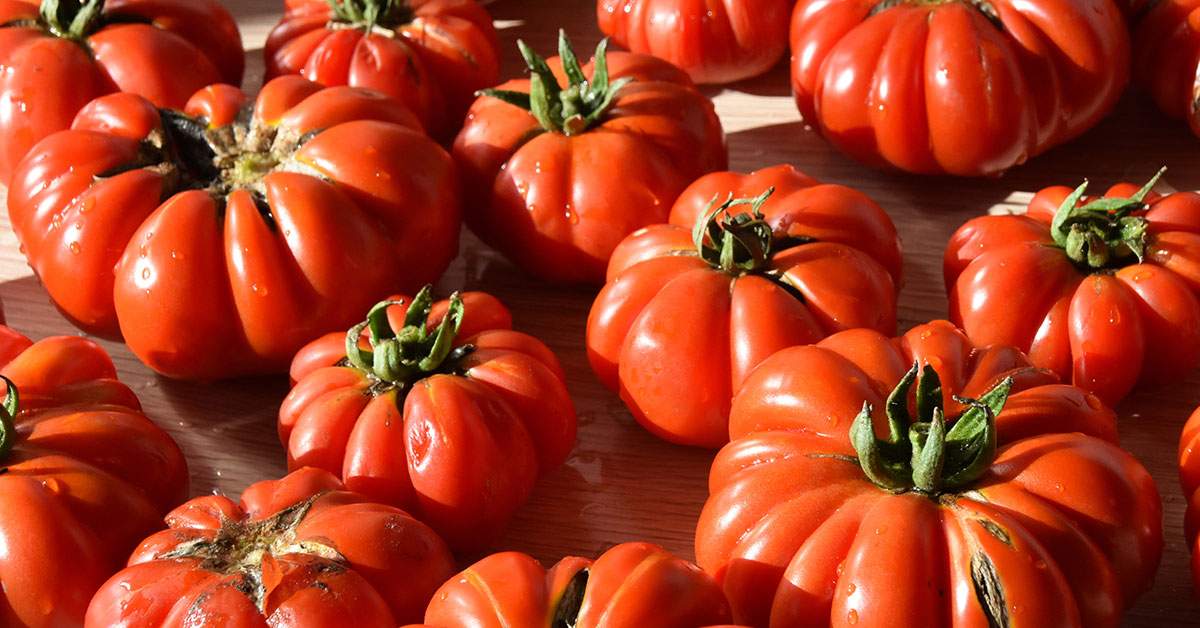Growing potatoes is a cinch, really. It is not hard to get a perfect crop of potatoes every time if you know how to grow them and when to dig them up. Harvesting potatoes can be a little bit tricky, though. Knowing exactly when to harvest potatoes can mean the difference between underdeveloped potatoes or a big bushel of delicious, homegrown spuds. In this article, we’ll be discussing how to get the most out of your potato crop and when to harvest them.
When to harvest homegrown potatoes
When you should expect to harvest your potatoes is largely dependent upon the kind of potato you’ve chosen to grow. Some varieties take a lot longer to mature while others are quicker. Let’s do a quick roundup of the most common types of potatoes and their time to maturity.
- Russet: 120 days
- Red: 90-120 days
- Yellow: 90-100 days
- Purple: 70-90 days
- Petite: 120-135 days
- Fingerling: 120 days
- Blue: 90 days
As we can see, potatoes definitely vary in the length of time needed to mature the crop and harvest. Petite and Russet potatoes are slow, taking 17 weeks or more, while purple potatoes are a quick crop to get in just before the growing season is over. Maturity time is one factor – the weather is another.
Potatoes are typically ready to harvest in the autumn when the weather begins to cool down. Potatoes are hardy annuals, meaning they can handle some light frosts and reduced soil temperature. Potatoes need soil temperatures above 45 F, so it’s best to harvest before your soil reaches that point.
Around the time that potatoes are ready to be harvested, you’ll notice the tops of the vines beginning to die back. Don’t harvest your potatoes yet if the vines are still vibrant, alive, and flowering. Be careful not to rush it. Wait until late in the season to harvest those potatoes.
Tips for digging up potatoes
So the weather is cool, your soil is getting cooler, the vines have died back and you are ready to make some French fried potatoes. What comes next? Should you just start digging? Not exactly, you want to be a little bit more careful than that.
In order to harvest potatoes properly, you will need a shovel and a forked spade. Before we harvest, we want to check our potatoes for maturity. Use the spade to gently loosen the soil around the base of one plant. Once one of the potato tubers has been revealed, look for the signs of a ripe potato: thick, firm flesh and skin that is firmly attached. If your potatoes look ready, we can start with the harvest.
Use the spade to loosen the soil around your potato plants. Once the plant is ready to come up, pull it up and remove the potatoes growing underneath. Once you have harvested all of your potato plants, carefully loosen the soil in the bed to search for any potatoes that may have been left behind. Sometimes these tubers can be sneaky and elude us.
Harvest your potatoes with caution and care. These tubers can be easily damaged by a gardener being too rough with their tools. If you’ve damaged a potato during harvest, it will need to be used right away. Bruised and damaged potatoes will rot if you try to store them. In general, it’s advisable to allow your potatoes about 2 weeks of time to sit and ripen before you eat them. Cure your potatoes at 45 to 60 degrees F, preferably in a dark location. Don’t freeze your potatoes.
Need to learn a little bit more about growing potatoes? Check out our comprehensive guide on growing potatoes.













